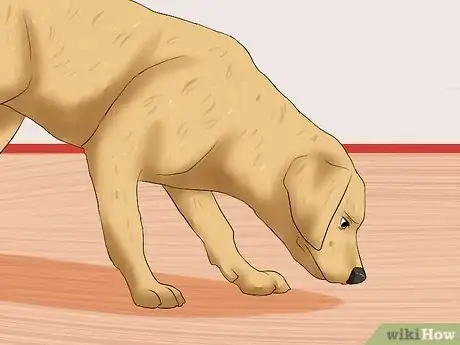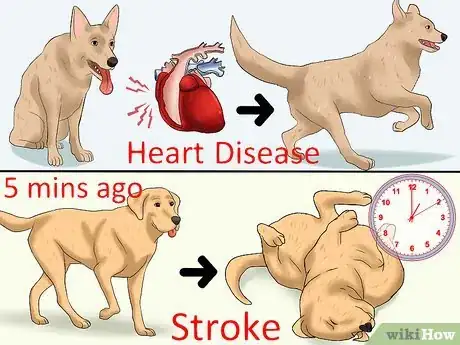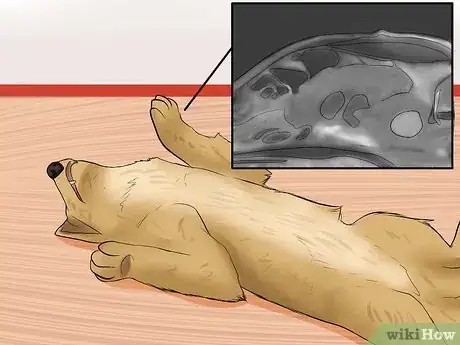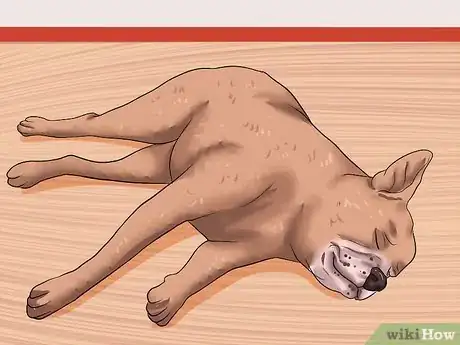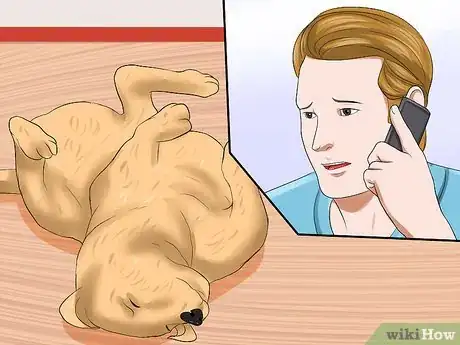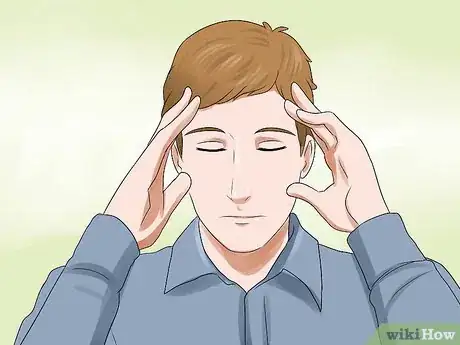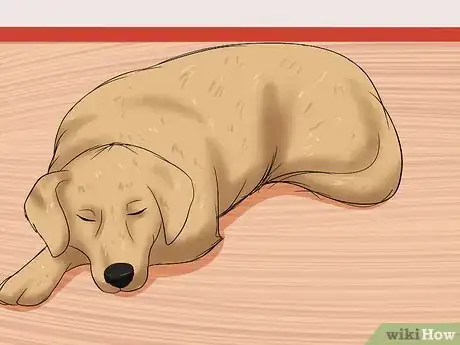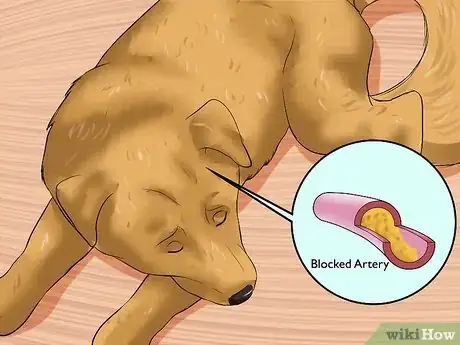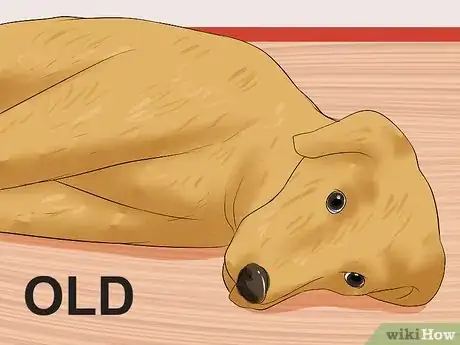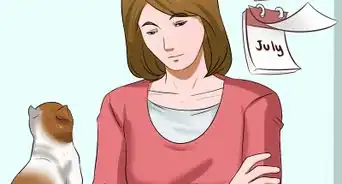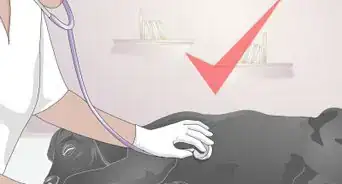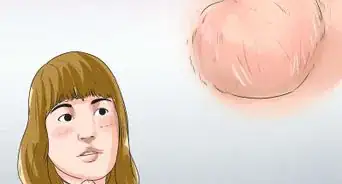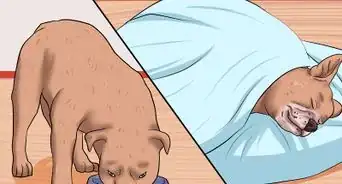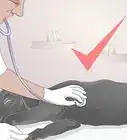This article was co-authored by Natalie Punt, DVM. Dr. Natalie Punt is a Veterinarian and the Founder and CEO of mPet- a smart phone app for pet owners to store, manage and transfer their pets medical records and health information. She specializes in small animal emergency and general medicine and veterinary practice economics. Dr. Punt holds a BS in Biochemistry and Molecular Biology from The University of California, Davis, an MS in Biochemistry from The University at Buffalo, and a DVM from Western University of Health Sciences.
wikiHow marks an article as reader-approved once it receives enough positive feedback. This article received 13 testimonials and 100% of readers who voted found it helpful, earning it our reader-approved status.
This article has been viewed 535,902 times.
Knowing the risks, signs, and symptoms of a stroke means that you can provide your dog with proper care and make it comfortable if you suspect a stroke. Although all dogs can potentially suffer from a stroke, older dogs, dogs that are overweight, or dogs that have certain health problems are more likely to experience a stroke. If you know what to look for and what to do, it can help you to keep calm and it allows you to seek veterinary advice more quickly. While it is important to comfort a dog during what is probably an extremely frightening experience, knowing how to identify and treat a stroke can potentially even save your dog's life.
Steps
Knowing the Signs of a Stroke
-
1Identify the common symptoms of a stroke. The symptoms of a stroke are varied, from sudden loss of balance to altered consciousness. Review the signs of a stroke and keep an eye on a dog you suspect is having a stroke. You want to be able to identity any of the key symptoms.
- Extreme weakness: There may be a neurological weakness of the limbs. This means that the nerves are not working and therefore do not give the legs the right information about how to stand up and support the dog. Although the muscles are strong enough to support the body, they do not receive the right nerve messages and so the animal is extremely weak and unable to stand.
- Nystagmus: Nystagmus is the technical term for when the eyes flick rapidly from side to side, as if watching a tennis match on fast forward. This is a common indicator of stroke, although it can also happen for other reasons, such as meningitis. Again, once nystagmus starts it can last for days. It also makes the pet feel nauseous, because it invokes a form of motion sickness. Because of this, the dog may vomit and lose interest in food.
- Sudden loss of balance. Be on the look out for a dog that cannot coordinate its limbs.
- Altered consciousness: In severe strokes some dogs may seizure or fit, whilst others may lose consciousness. This means they are unaware of what is going on around them and do not respond to their name or other stimuli.
-
2Differentiate between the symptoms of a stroke and the symptoms of other conditions. A stroke is a sudden event. You should suspect a stroke if a pet that was fine and normal 5 minutes ago, is now struggling to get up. If the dog is struggling because its dizzy, such as if they have heart disease, this episode may pass within a few minutes, once the dog has caught its breath be able to rise and walk around. A dog that has had a stroke, however, will remain disorientated for hours or even days.
- Please note, this symptom also overlaps with inflammation in the balance mechanism in the inner ear.
- In addition, there is a sliding scale of weakness, depending on the severity of the stroke. Sometimes if it is only mild the dog can stand and walk around slowly as if drunk, other times the dog is incapacitated, lies on their side and is barely conscious.
Advertisement -
3Understand how the length of stroke symptoms is central to a diagnosis of a stroke. To be classified as a stroke, technically the symptoms must persist for longer than 24 hours. If the symptoms resolve before this, and yet there is a strong suspicions of a blockage in the brain, it is instead known as a transient ischaemic attack (TIA). TIAs are a strong warning sign that a full blown stroke is on the way, and so always seek veterinary attention so any underlying causes can be corrected to reduce this risk.
-
4Be aware that conditions other than a stroke can cause similar symptoms to those of a stroke. Because these conditions are vastly different, the treatment will differ. However, do not worry too much about labelling your dog's condition but instead seek urgent help.
-
5Contact your veterinarian if you suspect a stroke. There are several symptoms that can point towards your pet having had a stroke. However, do not be too concerned about reaching a specific diagnosis at home, because calling the symptoms a stroke is just a label. What is important is that if you see one or some of these signs you should get urgent veterinary attention for your pet.[1]
Caring For a Dog You Suspect Has Had a Stroke
-
1Keep calm. If you believe your dog has had a stroke, the first thing to do is keep calm. Your dog will need your help in order to survive, so keep your wits about you and focus on helping your pup.
-
2Make sure your dog is comfortable. Put the dog in a quiet, warm environment. Make him or her as comfortable as possible by placing it on a padded bed and removing nearby furniture it could hurt itself on.
- If your dog is unable to stand, turn it to lie on the opposite side of its body every half an hour to reduce the risk of pneumonia because of blood pooling in one side of his lungs.
- Put water near your dog so it can drink without getting up. If it doesn't want to drink for a long time, wipe its gums with a wet cloth to give it some moisture.
-
3Phone the veterinarian and seek an urgent care appointment. If this emergency happens on a weekend or late at night, call your vets emergency line. If you get not response, you may need to find an emergency veterinary clinic to take your dog to.
- Make note of your dog's symptoms so you can relay them to the veterinarian over the phone. It's important to know the strength and length of symptoms, so that you can properly communicate the severity of your dog's condition to the vet.
-
4Understand what your veterinarian will do for your dog. The priorities for treatment of a dog that has had a stroke include minimizing swelling to the brain and maximizing oxygen to the brain. This will be done with medication and medical care. In addition, your veterinary office will be able to take care of secondary concerns, such as keeping your dog hydrated and comfortable.
Assessing Whether Your Dog is at Risk of Stroke
-
1Understand the basics aspects of a stroke. A stroke is caused by an interruption to the blood flow to part of the brain. It is a hallmark of strokes that they have a sudden onset, because of the sudden nature of a blood clot switching off the blood supply to part of the brain. The exact symptoms depend on which precise area of the brain is affected, but there are several symptoms held in common, no matter where the blood clot lodges.[3]
- A stroke is almost always caused by a blood clot which lodges and causes obstruction in the blood vessel, but it is also possible that it's caused by a plug of fat that has dislodged and circulated to the brain. A stroke can even be caused by a plug of bacteria in the brain.
- For many years there was dispute amongst veterinarians about whether animals had strokes or not. But this argument has now been largely won by the "yes they do happen" camp, because sophisticated imaging techniques, such as MRI scans, have produced pictures of the blockages in the brain.[5]
-
2Figure out if your dog is in an "at risk" category for stroke. Those dogs most at risk are often older, and have pre-existing health condition such as heart disease, high blood pressure, or Cushing's disease. Some veterinarians anecdotally report that dogs with underactive thyroid glands are at increased risk of stroke, but the data to prove this is lacking.
-
3Think about other risk factors. Other problems that can predispose a dog to a stroke include heartworm, where larvae can break off and circulate to the brain to cause a blockage. Also at risks are dogs with a history of clotting problems, with kidney disease, a high fever, or cancer.[6]
- The lowest risk group for stroke are young, fit dogs with no health problems that are regularly treated against heartworm.
-
4Know that dogs differ from people. Be aware that a stroke in a dog has a different presentation to in people. Whereas a person may be affected down one side of their body and their speech may be affected, this is not the case with dogs. They present in the ways described above.[7]
Expert Q&A
-
QuestionMy dog is sluggish and walks slowly and reluctantly. Is this a sign of a stroke?
 Pippa Elliott, MRCVSDr. Elliott, BVMS, MRCVS is a veterinarian with over 30 years of experience in veterinary surgery and companion animal practice. She graduated from the University of Glasgow in 1987 with a degree in veterinary medicine and surgery. She has worked at the same animal clinic in her hometown for over 20 years.
Pippa Elliott, MRCVSDr. Elliott, BVMS, MRCVS is a veterinarian with over 30 years of experience in veterinary surgery and companion animal practice. She graduated from the University of Glasgow in 1987 with a degree in veterinary medicine and surgery. She has worked at the same animal clinic in her hometown for over 20 years.
Veterinarian These are not typical signs of a stroke. Lack of energy and reluctance to walk can be caused by many different problems ranging from arthritis to a fever or organ failure. If the issue continues, it's best to have the dog examined by a vet.
These are not typical signs of a stroke. Lack of energy and reluctance to walk can be caused by many different problems ranging from arthritis to a fever or organ failure. If the issue continues, it's best to have the dog examined by a vet. -
QuestionMy dog suddenly lost control of her back end and bladder, shook, and walked in a circle. After 10 minutes, she was back to normal. Could this be a stroke?
 Pippa Elliott, MRCVSDr. Elliott, BVMS, MRCVS is a veterinarian with over 30 years of experience in veterinary surgery and companion animal practice. She graduated from the University of Glasgow in 1987 with a degree in veterinary medicine and surgery. She has worked at the same animal clinic in her hometown for over 20 years.
Pippa Elliott, MRCVSDr. Elliott, BVMS, MRCVS is a veterinarian with over 30 years of experience in veterinary surgery and companion animal practice. She graduated from the University of Glasgow in 1987 with a degree in veterinary medicine and surgery. She has worked at the same animal clinic in her hometown for over 20 years.
Veterinarian A stroke is a possibility, but you also need to consider a partial seizure. This is abnormal electrical activity in the brain (as opposed to a cardiovascular incident with a stroke) which affects a localized area, so the dog does not lose consciousness. This can produce similar symptoms, and if it's happened once, it may occur again.
A stroke is a possibility, but you also need to consider a partial seizure. This is abnormal electrical activity in the brain (as opposed to a cardiovascular incident with a stroke) which affects a localized area, so the dog does not lose consciousness. This can produce similar symptoms, and if it's happened once, it may occur again. -
QuestionWhat would cause strong tremors and foaming at the mouth?
 Pippa Elliott, MRCVSDr. Elliott, BVMS, MRCVS is a veterinarian with over 30 years of experience in veterinary surgery and companion animal practice. She graduated from the University of Glasgow in 1987 with a degree in veterinary medicine and surgery. She has worked at the same animal clinic in her hometown for over 20 years.
Pippa Elliott, MRCVSDr. Elliott, BVMS, MRCVS is a veterinarian with over 30 years of experience in veterinary surgery and companion animal practice. She graduated from the University of Glasgow in 1987 with a degree in veterinary medicine and surgery. She has worked at the same animal clinic in her hometown for over 20 years.
Veterinarian The most likely explanation is that the dog has had a seizure or fit. If it happens again, video the episode on your phone to show to the vet. Fits can occur for lots of reasons, including eating something toxic, liver shunts, or epilepsy.
The most likely explanation is that the dog has had a seizure or fit. If it happens again, video the episode on your phone to show to the vet. Fits can occur for lots of reasons, including eating something toxic, liver shunts, or epilepsy.
Expert Interview
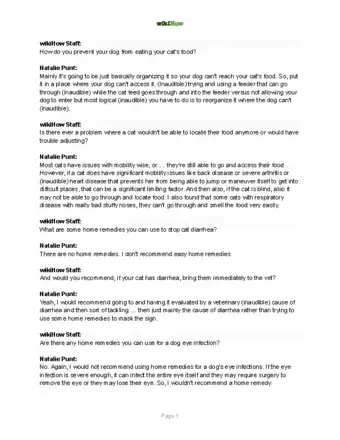
Thanks for reading our article! If you'd like to learn more about dogs' health, check out our in-depth interview with Natalie Punt, DVM.
References
- ↑ Clinical characteristics of cerebrovascular disease in small animals. Shores, Cooper et al. Proc 9th ACVIM Forum.
- ↑ Clinical characteristics of cerebrovascular disease in small animals. Shores, Cooper et al. Proc 9th ACVIM Forum.
- ↑ Clinical and topographic magnetic resonance characteristics of suspected brain infarction in 40 dogs. Garosi, McConnell et al. J Vet Intern Med 20, p311-321
- ↑ Clinical characteristics of cerebrovascular disease in small animals. Shores, Cooper et al. Proc 9th ACVIM Forum.
- ↑ Ischaemic stroke in dogs and humans: a comparative view. Garosi & McConnell. JSAP 46, 521-529
About This Article
If you think your dog might be having a stroke, observe them to see if they seem extremely weak, have darting eyes, are unbalanced, or lose conscious. Since a stroke can happen quickly, your dog may have been acting normal just a few moments earlier. If you notice these signs, wait for about an hour to see if the episode passes, which may be a symptom of a different condition. If you suspect your dog has had a stroke, contact your vet to determine the next steps for treatment. Keep reading for tips from our veterinarian reviewer on caring for your dog if they've had a stroke.
